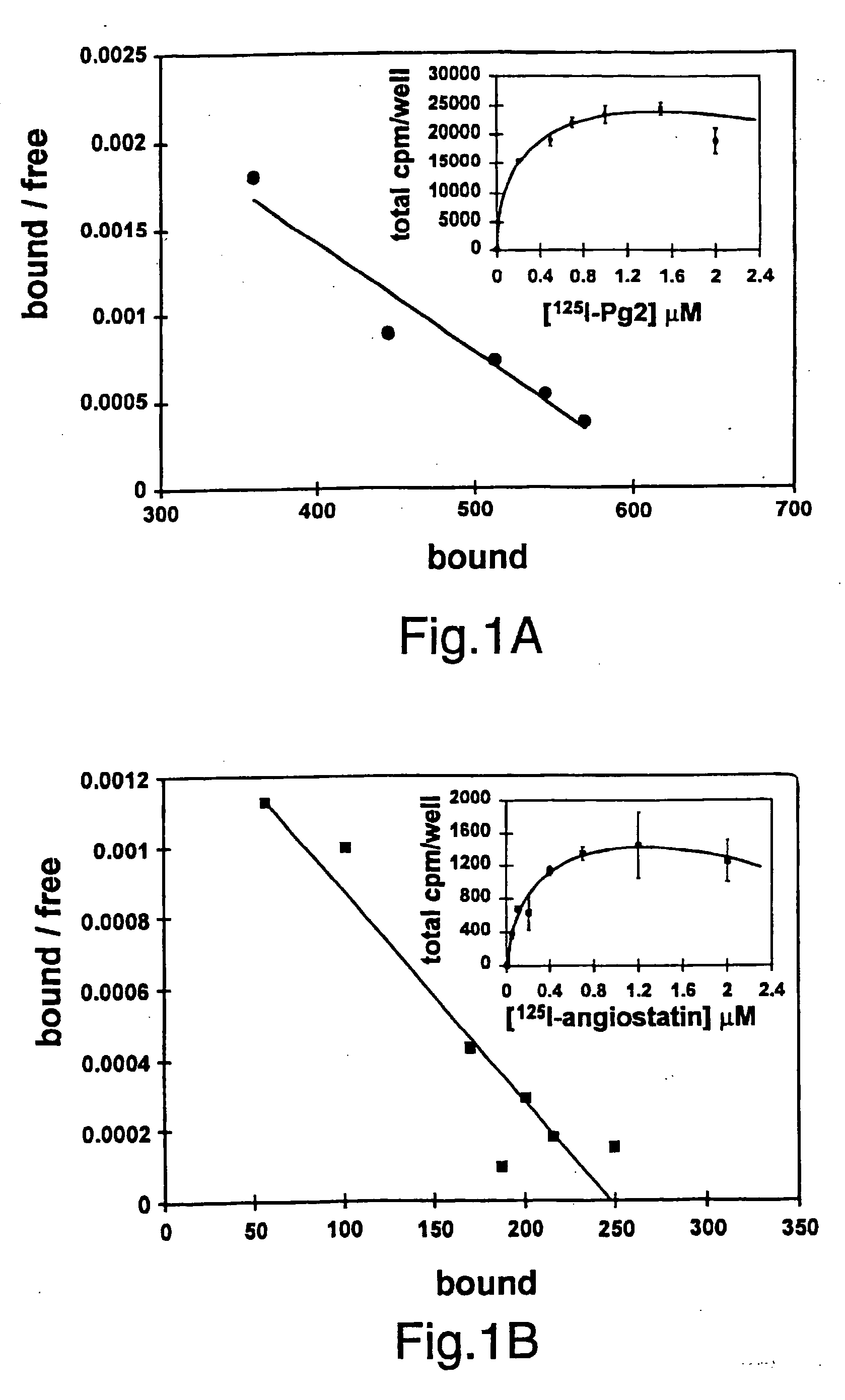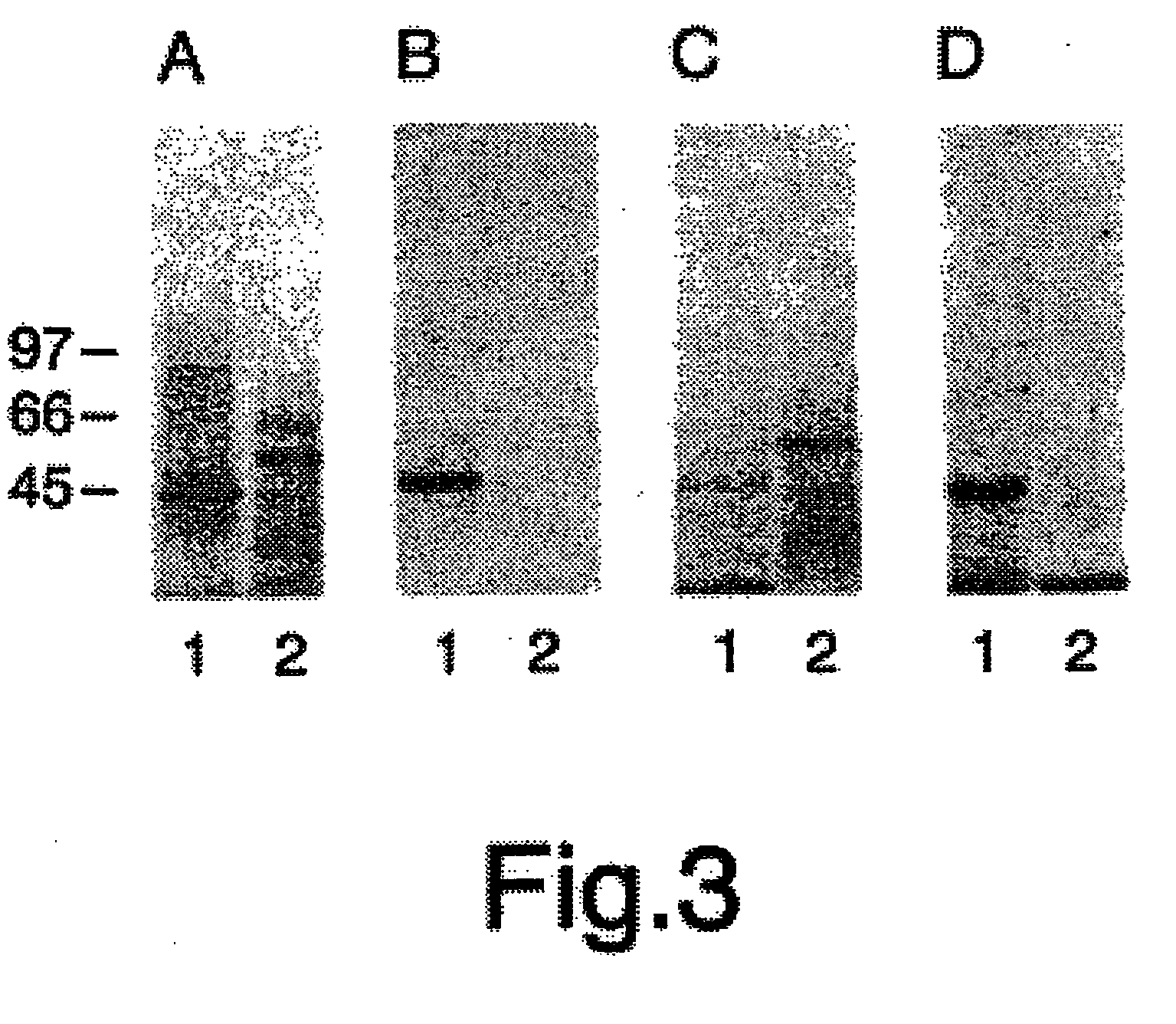Compositions and methods for promoting or inhibiting angiogenesis
an angiogenesis and angiogenesis technology, applied in the direction of liposomal delivery, depsipeptides, peptide/protein ingredients, etc., can solve the problems of abnormally prolonged angiogenesis and limited in vivo use of angiostatin or endostatin
- Summary
- Abstract
- Description
- Claims
- Application Information
AI Technical Summary
Problems solved by technology
Method used
Image
Examples
example 1
Angiostatin Binds ATP Synthase on the Surface of Human Endothelial Cells
[0189] Summary: Angiostatin, a proteolytic fragment of plasminogen, is a potent antagonist of angiogenesis and an inhibitor of endothelial cell migration and proliferation. To determine whether the mechanism by which angiostatin inhibits endothelial cell migration and / or proliferation involves binding to cell surface plasminogen receptors, the binding proteins for plasminogen and angiostatin were isolated from human umbilical vein endothelial cells. Binding studies demonstrated that plasminogen and angiostatin bound in a concentration-dependent, saturable manner. Plasminogen binding was unaffected by a 100-fold molar excess of angiostatin, indicating the presence of a distinct angiostatin binding site. The finding was confirmed by ligand blot analysis of-isolated human umbilical vein endothelial cell plasma membrane fractions, which demonstrated that plasminogen bound to a 44-kDa protein, whereas angiostatin bo...
example 2
Demonstration that Endothelial Cell-Surface F1-Fo ATP Synthase is Active in ATP Synthesis and is Inhibited by Angiostatin
[0220] As discussed herein, angiostatin blocks tumor angiogenesis in vivo. This example demonstrates that F1-Fo ATP synthase is the major angiostatin binding site on the endothelial cell-surface, and this data suggests that ATP metabolism may play a role in the angiostatin response. The data also demonstrate that all components of the F1 ATP synthase catalytic core are present on the endothelial cell surface, where they co-localize into discrete punctate structures. The surface-associated enzyme is active in ATP synthesis as shown by dual label thin layer chromatography and bioluminescence assays. Both ATP synthase and ATPase activities of the enzyme are inhibited by angiostatin as well as by antibodies directed against the alpha and beta subunits of ATP synthase in cell-based and biochemical assays. The data suggest that angiostatin inhibits vascularization by s...
PUM
| Property | Measurement | Unit |
|---|---|---|
| apparent dissociation constant | aaaaa | aaaaa |
| pH | aaaaa | aaaaa |
| relative molecular weights | aaaaa | aaaaa |
Abstract
Description
Claims
Application Information
 Login to View More
Login to View More - R&D
- Intellectual Property
- Life Sciences
- Materials
- Tech Scout
- Unparalleled Data Quality
- Higher Quality Content
- 60% Fewer Hallucinations
Browse by: Latest US Patents, China's latest patents, Technical Efficacy Thesaurus, Application Domain, Technology Topic, Popular Technical Reports.
© 2025 PatSnap. All rights reserved.Legal|Privacy policy|Modern Slavery Act Transparency Statement|Sitemap|About US| Contact US: help@patsnap.com



